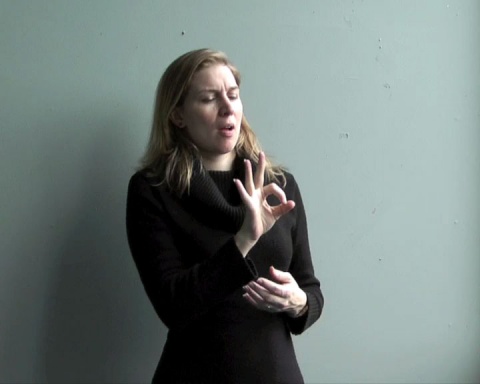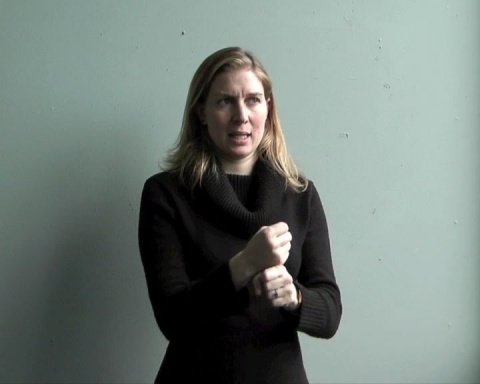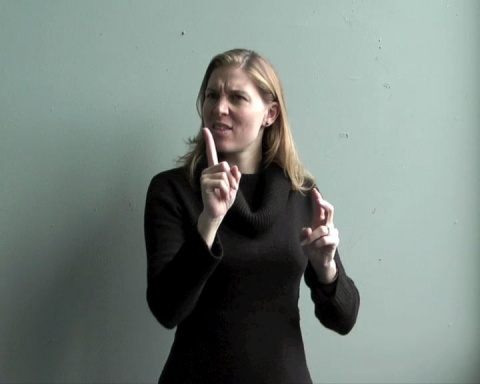Round trip from Conceptual Paradise
From S E B A S T I E N G O Y
This installation is composed of three TV screens, each placed on a pedestal at viewer's height. A first screen shows the upper half of a person, moving his arms, hands and fingers according to a sign language. Opposite to this screen, separated by a few meters, are the two other screens, placed side to side so that both face the first screen. The screen on the left shows varying content, but the soundtrack can hardly be heard, its low volume being dominated by the voice from the screen on the right, which shows the upper half of another person, speaking. It is soon clear that the left screen is showing a documentary called Conceptual Paradise, which gathers a cornucopia of interviews with prominent figures of conceptual and contemporary art. Any intention of understanding the original content is frustrated by the action of the speaker of the right screen, whose communication nevertheless relates to the expected content of the left screen, but in asynchrony and idiosyncrasy. Is a conversation taking place between two opposite screens, between this probably mute person and his speaking interlocutor, despite their concurrent use of languages?
The two actors on the first and second screen are acknowledged in the closing credits as sign language interpreters. The outside voice overlaid on the original soundtrack, the title of the piece and the relative position of the screens all suggest that the operation taking place is a two-fold translation, from the documentary into sign language and back into spoken form. The elicited dialogic situation between the two opposite participants is in fine denied and has to be construed to unidirectional, instrumental communication. Regarding the documentary, a single interpretation, homogeneous in tone and vocabulary, is provided in lieu of a multiplicity of voices individualizing the manifold conceptual movement. This coalescence alludes to the discursive formation intrinsic to the documentary, as dispersed interpretations are articulated to feed the underlying historicizing process. More, the choice of language as primary medium to question the cultural discourse about art and its logocentrism, a choice which typifies conceptual practices, is here reactivated by the round-trip translation. This procedure of intervention produces only an ephemeral visual form — the sequence of corporeal signs soon vanishing in sounds, thereby advancing a tentative resolution to the documentary's aporia: providing a representation to the critique of representation.


